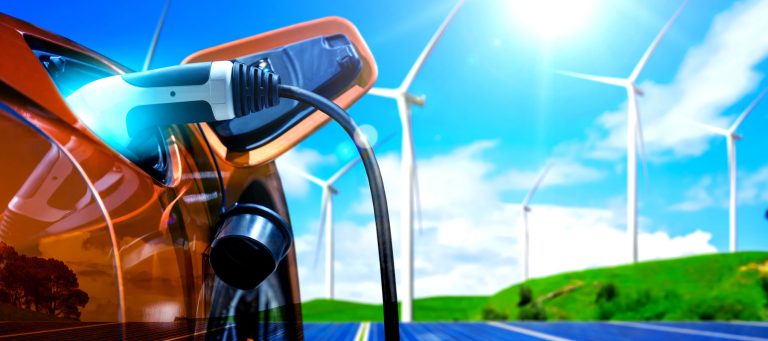As electric vehicles (EVs) become increasingly popular in Australia, the demand for reliable and efficient charging solutions is on the rise. Fortunately, there are several types of EV chargers available, each offering distinct benefits and catering to different needs. In this article, we will explore the various types of EV chargers found in Australia and the advantages and uses of each.
- Level 1 Chargers (AC Charging)
Level 1 chargers, also known as AC charging, are the most basic and commonly available chargers for EVs. They come with a standard power cord and plug into a regular household outlet, typically rated at 240 volts. Level 1 chargers are usually included when purchasing an electric vehicle, making them a convenient option for residential charging.
Benefits and Uses:
- Convenience: Level 1 chargers can be used with any standard household outlet, making them readily available for EV owners without requiring any additional installations.
- Cost-Effectiveness: Since Level 1 charging utilises existing infrastructure, there are minimal costs associated with using this type of charger.
- Suitable for Overnight Charging: Level 1 chargers are ideal for overnight charging when time constraints are not a concern, as they provide a slower charging rate compared to other options.
- 2. Level 2 Chargers (AC Charging)
Level 2 chargers are an upgrade from Level 1 chargers, offering a faster charging rate. These chargers require a dedicated power supply and are typically installed by professionals in workplaces, commercial spaces, public charging stations and in homes.
Benefits and Uses:
- Faster Charging: Level 2 chargers can significantly reduce charging time compared to Level 1 chargers, making them more practical for daily commuting and long-distance trips.
- Versatility: These chargers can be installed at various locations, making them suitable for residential, commercial, and public charging applications.
- Cost-Effective for Longer Drives: Level 2 chargers are ideal for EV owners who need to charge their vehicles more quickly during the day or for travellers covering longer distances.
| Daytime Charging. Founder, Richard Butcher, is dedicated to encouraging the shift from nighttime to daytime charging for electric vehicles to take pressure off the energy network, safeguarding the environment and making EV charging simple and flexible for everyone. |
3. DC Fast Chargers (Level 3 Chargers)
DC Fast Chargers, also known as Level 3 chargers, provide the fastest charging rates available for EVs. They are primarily found at public charging stations along highways, major routes, and urban areas, allowing for quick top-ups during long journeys.
Benefits and Uses:
- Rapid Charging: DC Fast Chargers can provide a significant charge in a short period, usually delivering an 80% charge in under 30 minutes.
- Long-Distance Travel: DC Fast Chargers are designed for long-distance travel, enabling EV owners to recharge quickly and continue their journey with minimal downtime.
- Public Infrastructure: These chargers are installed in strategic locations, allowing EV drivers to access fast charging services conveniently.
- 4. Tesla Superchargers
Tesla Superchargers are exclusive to Tesla electric vehicles and are designed specifically for rapid charging. They are often located along major highways and in popular destinations.
Benefits and Uses:
- Ultra-Fast Charging: Tesla Superchargers offer incredibly fast charging speeds, providing approximately 170 miles of range in just 30 minutes.
- Tesla Compatibility: Tesla Superchargers are exclusively compatible with Tesla vehicles, ensuring seamless charging experiences for Tesla owners.
In Australia, a diverse range of EV chargers are available, each tailored to suit different charging needs and scenarios. Level 1 and Level 2 chargers cater to residential and workplace charging requirements, providing convenient and cost-effective solutions for everyday use.
DC Fast Chargers and Tesla Superchargers, on the other hand, are designed for long-distance travel and offer rapid charging capabilities, allowing for efficient recharging during extended journeys. As EV infrastructure continues to expand, understanding the different types of EV chargers and their applications will empower EV owners to make informed decisions about their charging needs.
About FlexCharge Daytime Electric Vehicle Managed Charging Network.
Flex Charge, is a leading Australian-based network equipment owner and Charge Point Operator (CPO).

We provide an all-in-one reliable, flexible Daytime EV Managed Charging Network to help you to contribute to a brighter future.
- Flexible, Faster Level 2 EV Charging Units installed and maintained by Flex Charge
- National EV Mobile App, Payment and Billing managed by Flex Charge
- Dynamic Load Management for site demand limiting and Time of use limiting
- Charge anywhere, anytime with Inter-Charge Network Roaming
As the CPO and network equipment owner, we cover all costs, including installation, billing and maintenance, and work with the energy retailer of your choice.
For more information about FlexCharge and its all-in-one reliable, flexible Daytime EV Managed Charging Network, click here.

